Stampin' Basics
Choose the topic you're interested in to learn more tips and details about certain products and techniques.Q: Why are the wood blocks in my stamp sets different colors?
A: Our wood blocks are made with maplewood, and as with other natural products, each block is unique. The color of the wood may differ slightly-these variations enhance the wood's overall beauty and are not considered defects.
Paper
Q: Can you clarify quality issues with card stock?
A: Because there is such high demand for our products, Stampin' Up! outsources its card stock and paper to several different paper mills. Once a mill creates card stock in a specific color, the mill tests it with a spectrophotometer, a device that measures the color. The card stock must pass the mill's internal quality control standards developed in conjunction with Stampin' Up!, including a color examination in a light box. Our products are then reviewed carefully by color experts at Stampin' Up! before being approved.
The nature of color means that you will see a slight color variance between batches. In addition, you may see variation between products, such as card stock, Classic pads, Craft pads, ink refills, cartridges, Stampin' Pastels, and Stampin' Write markers. These products are made by different vendors and with different ingredients, but you can be sure your Stampin' Up! products will always coordinate to help you create the highest quality scrapbook pages and cards. These products have different ingredients and are designed to coordinate, not match.
Q: How environment-friendly is our card stock?
A: Our exclusive colors average 15-25% virgin fiber (northern soft wood), and the rest is recycled. A few of the very light colors require 40% virgin fiber to achieve the pale colors.
Q: What is the difference between pigment ink and dye ink?
A: There are several differences. Dye ink absorbs into the paper; pigment ink sits on top of the paper and does not absorb. Pigment ink tends to be thicker than dye ink and is often preferred for scrapbooking because pigment inks are more resistant to fading than most dye inks. (However, some dye inks are specifically formulated for use in scrapbooks.) The Stampin' Memories section of the Product Guide contains a more detailed explanation of this and other archival topics.
Q: What about drying time and pigment ink?A: Pigment ink, by nature, dries more slowly than dye inks. You can heat-set the pigment inks to speed drying time or set them aside to dry. After heat-setting, pigment inks will resist all but the most deliberate efforts to smear them (such as wetting your finger and rubbing the ink). If you live in a humid area, you will want to heat-set the inks, because air-drying time increases as humidity increases. Heat-setting and air-drying produce the same color results. When heat-setting, be careful of heating too long, which may cause a scorched look.
Q: Can I use pigment ink for embossing?
A: Because of the longer drying time noted above, you have time to apply your embossing powder without rushing; therefore, the Craft pads are an excellent choice for embossing.
Q: Can I use pigment ink on slick surfaces like tile, porcelain, and terra cotta?
A: Pigment ink will not dry on slick surfaces, even when heat-set. However, if you seal the ink with clear embossing powder, you get a delightful glossy finish. Our recommendation is that this technique be used for decorative purposes only, because the image can be scratched off with your fingernail or metal, but it doesn't rub off with just a gentle rub from your fingertip. So you could use this technique for a decorative tile to hang on a wall, but you wouldn't want to decorate the tiles on your kitchen floor this way.
Q: What about wood?
A: Pigment ink works well on smooth raw wood and on wood already painted with a water-based paint, as long as it is heat-set. After heat-setting, you may choose to spray it with a fixative to add an extra layer of protection.
Q: Can I stamp walls with pigment ink?
A: Results with pigment ink on walls vary depending on texture, finish, and previous paint on the walls. Test on a small portion of unseen wall. If the image is dry after heat-setting, it may be used on the remainder of the wall. Acrylic paints are the best choice for stamping on walls.
Q: Does pigment ink work on fabric?
A: Yes, you can use it for stamping on fabrics. However, colors are less vibrant on fabric than on paper. Also, even after heat-setting, fabric inks fade slightly. This is true not only of our Craft pads but other fabric pads available in the retail market as well. For a more vibrant image, try stamping the same image twice (one on top of the other) using the Stamp-a-ma-jig®. Here are some important tips to remember when stamping on fabric:
- Prewash the fabric.
- Tightly woven and smooth-finished fabrics work best.
- Test a small area of fabric first.
- Heat-set immediately after stamping.
- Wash as normal or hand wash, but air or line dry.
- For best results, re-ink pad frequently.
Q: What are some of the many ways to use VersaMark® Ink?
A: As its name suggests, VersaMark is a very versatile ink! The following is a list of some of our favorite uses of this unique ink pad.
- Two Step Stampin'Stamp the first image with VersaMark and then the second with an Encore metallic pad. Technique looks best on darker, richer tone card stocks (i.e. Bravo Burgundy, Handsome Hunter).
- Embossing
Use the VersaMark pad like you would any of our pigment ink pads in your embossing projects. Because VersaMark is a clear ink, you can use the embossing powder color of your choice without the color of the pigment pad showing through the embossed powder. - Embossing with Classic pads
Ink and stamp with one of our Classic Stampin' Pads. Clean the stamp and then ink the same image with VersaMark, stamping directly over the image. Apply clear embossing powder and heat with embossing tool. Note: For best results, use the Stamp-a-ma-jig stamp positioner to help line up the image stamped with Classic pads and the embossed image. - Embossing on GlassPrior to stamping, rub the Embossing Buddy over the stamping surface. Stamp the image on a glass container with the VersaMark pad and then emboss with detail gold or silver for an elegant touch to any piece of glassware. Note: This technique is recommended for decorative purposes only. Embossed images can scratch off or come off when washed.
- Poppin' Pastels Stamp the image with the VersaMark ink pad on a piece of neutral colored card stock (Whisper White, Very Vanilla, etc.). Apply Stampin' Pastels with sponge daubers, stamping sponge or pastel applicator directly to the ink.
- Resist
Stamp on Glossy White card stock with the VersaMark pad. Ink up the rubber brayer in a Classic or Spectrum pad and repeatedly roll over the card stock. Wherever the VersaMark ink was stamped, the card stock resists the colored ink from the brayer. Note: This technique can also be done with a Gold Encore pad. - Emboss Resist
Stamp an image with VersaMark ink and emboss with Crystal Clear embossing powder. When the image is cool, sponge one or more colors of Classic ink over and around embossed image. The stamped image will resist the ink. - Reverse PastelsApply Stampin' Pastels (bright colors work best) to a dark colored card stock (Basic Black, Night of Navy, Close to Cocoa, etc.) and then stamp over the chalked area. The ink pulls off the color of the chalk, revealing the paper beneath. Be sure to clean the stamp before re-inking as the chalk you removed is now on your stamp and will dirty your VersaMark pad.
- Watermark
Create a great tone-on-tone effect by stamping on a piece of colored card stock. The image appears a deeper shade than the card stock and is perfect for subtle backgrounds.
Q: How do I use the Watercolor Wonder Crayons?
A: The Watercolor Wonder Crayons are amazingly versatile; these artistic-quality, highly pigmented crayons coordinate with our exclusive colors and can be used in many different ways.
- Color directly on the stamp. Then spray either the stamp or the paper with water before stamping. If you spray the stamp, the color will look more faded. Spraying the paper results in more vivid color. You can also stamp an image, then spray the stamp with water and stamp again. This will create darker and lighter images.
- Color directly on a piece of scratch paper to create a palette, and use an Aqua Painter or watercolor brush to color the image.
- Color an image with the crayon, then blend with a watercolor brush. The water-soluble crayons make it easy to blend colors.
- Color an image without using water. Watercolor Wonder Crayons can be used on any card stock. For best results, use watercolor paper. When stamping and coloring line-art images, the Basic Black Classic Stampin' Pad is the best choice when using Very Vanilla or Whisper White card stock. Use a Jet Black StazOnT pad with all other card stock, including watercolor paper.
Q: Can I use liquids in the Aqua Painter besides water?
A: The Aqua Painter will hold any liquid in its barrel. The painter is made with a synthetic nylon brush tip, which the manufacturer says will not be damaged by bleach. However, we have not tested it with all possible liquids, and we recommend that you use the Aqua Painter for its intended purpose: to hold water.
Q: What's the easiest way to use the hobby blade?
A: Try pulling the knife towards you in little smooth surges, and "walk" the paper around with the fingers of your other hand. The cutting comes from the knife, but all the turning comes from the paper. The trick to getting a smooth line is to keep everything moving. Here are some additional tips:
- Cut inside curves and small, complicated bits before smooth, straight lines. For instance, cut out the inside areas of letters like O and A before cutting out the rest of the letter.
- Cut clockwise rather than counter-clockwise.
- Keep the paper big enough to be manageable, but not so big that it becomes awkward.
- Cut with the line towards you so you can see the line that you are following.
Q: How long will the Craft & Rubber scissors remain sharp?
A: Many factors affect the sharpness of the scissors, so it's difficult to pinpoint exactly how long they will retain a sharp edge. Variables include the amount of rubber trimmed and the frequency of use with other materials. Because of the composition of the rubber, the scissors will eventually have to be sharpened. We recommend taking the scissors to a reputable cutlery store or other establishment where scissors and knives are sharpened.
Q: What are the benefits of the Stampin' Up!®'s grid paper?
A: Our convenient grid paper is something no stamper should be without! With generous 11" x 17" measurements, it is large enough to use beneath any project so you can wheel and stamp freely. Measurements are printed right on the paper, eliminating the need for a ruler. And when you're done, simply throw it away and your clean up is through!
Q: What tool can I use to simplify using ribbon in my projects?
A: When planning a project with ribbon, consider using the stylus tool to help poke the ribbon through. Leave enough tail on the ribbon to trim after it has been inserted into the card stock, because it may fray while being pulled through the hole.
Q: Why can't I use my hair dryer to emboss?
A: Hairdryers do not get hot enough to melt the embossing powder and generally blow too hard. They may blow the embossing powder right off the paper.
Q: What can I do to stop embossing powder from sticking all over my Powder Pal?
A: First, wash your tray in soap and water with a mild dish detergent. This will help remove any remaining manufacturer's oil. Also, try rubbing your Embossing Buddy in the tray between uses as this will help to remove oils and static from your Powder Pal.
Q: How many pages will Stampin' Up!'s albums hold?
A: The recommended number of pages is approximately 30 sheets (manufacturer recommendation). This would mean you could actually get about 60 pages if you're putting two scrapbooked pages back-to-back in the page protector. However, you might get less than this amount if you use a lot of layering on the pages. Layering with text-weight papers (our patterned papers) instead of cover-weight papers (our card stocks) will reduce the thickness of pages and consequently increase the number of such pages the albums will hold.
Q: How can I make up for the overall weight that embellishments add to my scrapbook pages?
A: With so many fun, but heavy, embellishments on your scrapbook pages, sometimes it's necessary to cut away some weight in other places. It helps to make your pages less bulky, and your entire album will be lighter and easier to carry! One great way to reduce the weight of your pages is to cut out the centers of photo mats--the section that is covered by the photo. Use a paper cutter to cut only the center section of the mat, so that the cuts do not show once the photo is matted. Not only do you save in weight, but it will also save you money! You'll be able to use the centers of mats to mat other photos or to use as embellishments that will coordinate perfectly with the rest of your page. Cutting out the center of your mat is easy. Lay your photo over the mat to determine how far into the mat you should cut. Make a mark with a pencil about 1/4" or more inside where the photo lies on the mat, then make marks just inside all four corners of the photograph. Use the marks to guide the blade of the paper cutter. Instead of cutting through the whole mat, place the blade on the mat at one pencil mark, and slide it to the next. Continue cutting each side until the center of the mat is completely cut out. To adhere your photo to the mat, place your adhesive along the edges of the photo and adhere it to the mat.
Q: Is bleaching safe for scrapbooks?
A: According to our paper manufacturer, "Bleaching with standard household bleach should not affect the pH of the paper because the bleach is just slightly more alkaline (alkaline: opposite side of the pH scale than acid) than our paper. However, bleaching can weaken the fiber of the paper somewhat."
Bleaching tips:
- Apply bleach to a dried-out blender pen for bleaching inside an image.
- Use a plastic sponge bottle (traditionally used for moistening postage stamps) filled with bleach to apply the bleach directly on your stamp.
Q: How can I plan for the space I need for journaling in my scrapbook pages?
A: Sometimes it's hard to know how much space you will need on a page for your journaling. Try writing your journaling on a Post-It® and sticking it to the outside of the page protector on your completed page. This will give you an idea of how much room you will need to say what you want.












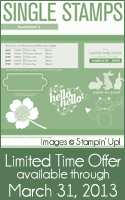



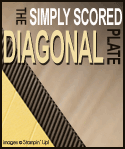
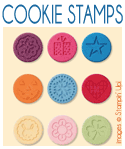
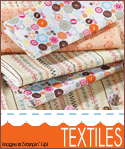

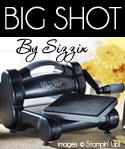
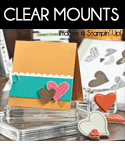




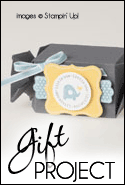
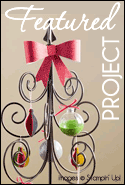

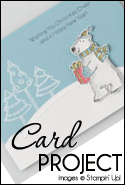


No comments:
Post a Comment